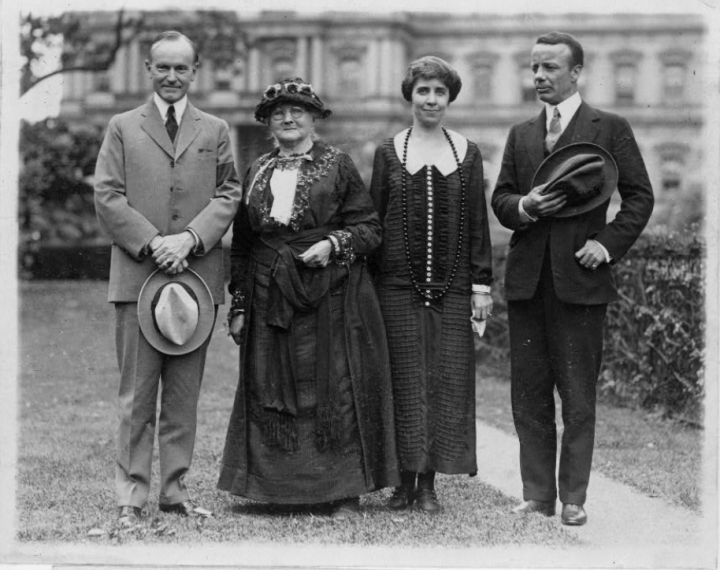Who was Mother Jones? This American schoolteacher and dressmaker lived hand-to-mouth, lost her husband and family to illness, and emerged with fierce determination to fight child labor and unsafe working conditions. By the end of her life, she was praised as “unquestionably the greatest woman America had ever produced.” Here’s a short story of a woman who was bigger than life.
Mary Harris
When Mary Harris was born on May 1, 1830, in a one-room thatched cottage in County Cork, Ireland, the impoverished “cotters” (cottage tenants) were being evicted by the wealthy absentee landowners, who had decided that it was more profitable to raise sheep and cows than to collect rents from cantankerous peasants. Blood flowed over the rolling green hills of County Cork. Hundreds of cotters were hanged, including Mary’s grandfather!
Her father, Richard, escaped the noose by fleeing to North America in a fishing boat, vowing to send for his family as soon as he had earned the money. Although it took 11 years, he was true to his word. Richard found work in Canada on a Toronto railroad, and there the family found a sliver of paradise. Best of all, Toronto had a free public school system, including a “normal school” for training teachers. But when she applied for a teaching certificate, she was turned down. Roman Catholics were not allowed to teach in public schools.
Hand-to-mouth years followed. Learning that the Memphis, Tennessee, school system was in need of teachers, Mary took the first train south. She arrived in July 1860, was hired in August, fell in love in September, married in October, and was fired in November.
But she was happy in her marriage to an iron molder named George Jones, who, on his Sundays off, was an organizer for the outlawed Knights of Labor. After the birth of their fourth child, Mary began to accompany him on his secret organizing trips, with the four tots tagging along.
It was all too good to last, and it did not. In the summer of 1867, a yellow fever epidemic swept Memphis. In one terrible week, Mary lost her husband and four children. “I sat alone through nights of grief,” she wrote in her autobiography. “No one came. No one could. Other homes were stricken, just as mine.”
Workers Had No Rights
Mary Jones emerged from the experience forever scornful of death and burning with a fierce determination to spend the remainder of her life working for the exploited class. This was a formidable challenge. Labor had no rights, and owners dictated the wages, hours of work, and working conditions.
Child labor was a mainstay of industry. Little girls, some as young as 7, made up a large percentage of the textile workforce. In the anthracite coalfields of eastern Pennsylvania, breaker boys (“sad, gray, old men,” Mother Jones wrote) spent their childhood hunched over coal chutes, picking slate from the cascading coal.
Thus now-childless Mary Harris Jones began a 60-year career as mother to labor. She became an organizer for the Knights of Labor and then for the United Mine Workers of America. She organized miners’ unions in many states, but her longest struggles took place in West Virginia, where conditions were most deplorable. She participated in the great strikes of the 19th and early 20th centuries, and there were many. She led the strikes against the railroad barons, the meatpackers, the steel magnates, the textile oligarchs, and—most of all—the barons of coal.
Notably, in 1903, Mother Jones led a small army of children, many mutilated from mill accidents, to New York City. Her plan was to bring the parade to the summer home of President Theodore Roosevelt on Oyster Bay, Long Island. The president refused to receive them, but her well-publicized march helped to develop popular support for national child labor laws.
Industry attacked her with every weapon it possessed. She was denounced as “a vulgar, heartless creature who inflames the ignorant workers to bite the hand that feeds them.” She was spat at, kicked, and clubbed. She was 86 when she was jailed for the last time—yet she did not quit her efforts until late in her 90s.

Mary Harris “Mother” Jones with Calivin Coolidge in 1924; she had supported Republican candidate Coolidge for president.
The Greatest Woman
As the years rolled on, many thought that she would not make it to her 100th birthday in 1930, but when the great day dawned, she was having the time of her life. On May 1—coincidentally International Workers’ Day, the holiday that honors workers everywhere—she basked happily amid people, gifts, flowers, and telegrams. They honored the woman whom a governor of Arizona had praised as “unquestionably the greatest woman America has ever produced.”
Mother Jones died 6 months later and was buried in a union-owned cemetery in an Illinois coal-mining town. She had fought countless battles and lost most, but still left a legacy that became the foundation of the American labor movement.
